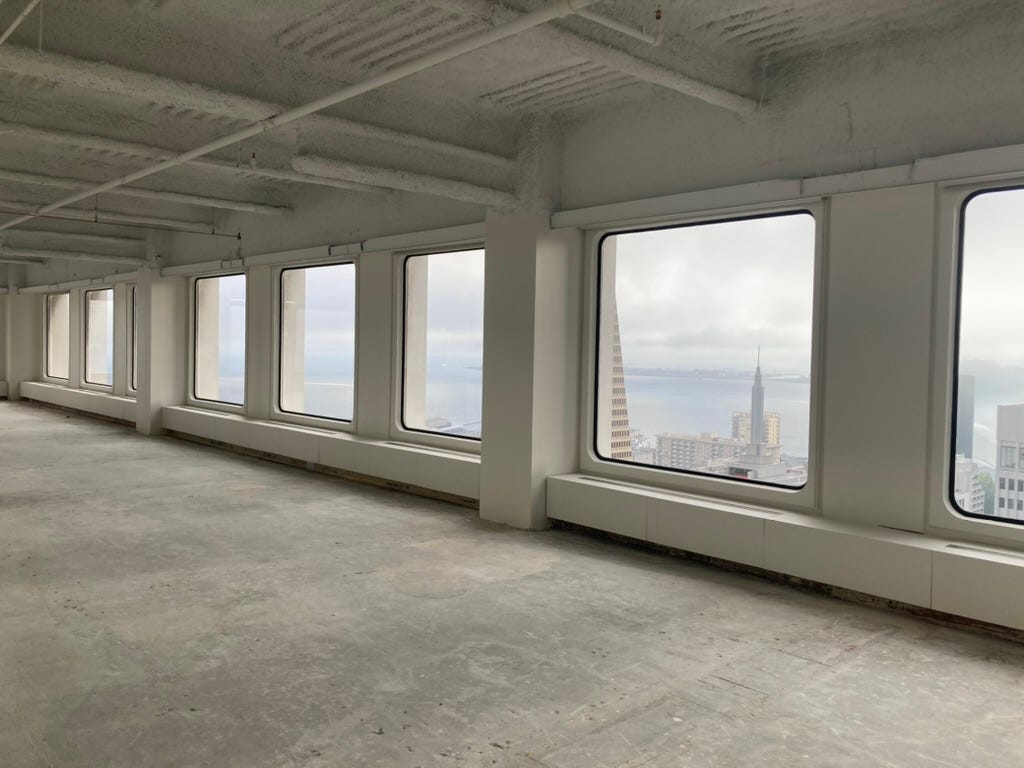Leases: Treat your tenants like partners to decarbonize faster
Vacancies, SEC rules and climate change as a prompt for partnership-oriented lease terms
The COVID-19 pandemic upended the world of commercial real estate. Especially in the area of office space, the balance of supply and demand has shifted. With 20-35% vacancy rates in office markets across the country, landlords no longer hold the power in the landlord-tenant relationship. Landlords should consider innovations in leasing in order to bring tenants back to buildings. Decarbonization provides an opportunity to rethink the commercial lease that governs that relationship and build a partnership instead of an arms-length relationship.
Leases structured as partnerships and based on continuous improvement should be part of every landlord’s and every tenant’s decarbonization strategy.
The lease is one of humankind’s oldest legal arrangements. The code of Hammurabi, from 1750 B.C., contains provisions around how leases are treated. The lease is still an important part of how we structure commercial relationships today.
The essential problem with the lease in the modern era is that it freezes in place a relationship that should be relatively dynamic. Businesses, regulations, economies change quickly, but commercial leases at the center of it all are staid, unchanging affairs.
My time working with buildings to decarbonize has convinced me the leasehold relationship can be a major source of improvement for building owners and tenants seeking to change their carbon footprint. Just as multiple industries have moved from the revenue model being based entirely on selling a product upfront to a continuing services arrangement – think everything from elevator sales to software – landlords could benefit from a broadening of their customer relationships and their revenue model.
The main commercial advantage of a lease is that it provides terms that lock in certainty for the banks that loan money to buy buildings, and for tenants who want cost predictability. But it provides that certainty at the cost of reducing the landlord-tenant relationship to an arms-length transaction rather than the closer relationship of business-customer.
“Landlords in a standard arms-length leasing relationship give up the opportunity to share in the upside from long-term improvements made in the services they deliver to tenants.”
Landlords in a standard arms-length leasing relationship give up the opportunity to share in the upside from long-term improvements made in the services they deliver to tenants. For example, if the landlord improves the lighting design and energy efficiency of a building’s hallways then current tenants benefit, but a landlord does not share directly in those benefits.
Because of these incentives, or lack thereof, buildings sit and fester and gradually deteriorate or fall behind the times, instead of undergoing the continual improvement you’d expect to happen in a billion dollar investment.
Climate change – and the Securities and Exchange Commission (SEC) greenhouse gas reporting rules – provides a specific catalyst for landlords and tenants to re-examine the general problem of inflexible lease terms. The SEC has put its weight behind reporting rules that require commercial entities to report out climate-related risks and how they are managing them.
The SEC rules are conceptually complex and differ if you’re a landlord or a tenant. The basics are that the tenants will really start to care about reporting and managing emissions, providing an opportunity for differentiation by landlords.
What these rules mean is that all of a sudden there are commercial incentives for tracking greenhouse gas emissions for both landlords and tenants. Just as importantly, the SEC rules place importance on organizations showing they are putting management structures in place to lower those emissions. Restructured leases could be a key to meeting these requirements in commercial real estate.
For example, here is a standard lease term that addresses how landlords can pass through costs to a tenant in a commercial building. The language is general but it applies to efficiency projects:
(vii) the cost of capital improvements which decrease the Common Area Expenses, provided, however, the amount included as Common Area Expenses shall be limited to the actual verified amount of the decrease in Common Areas Expenses as a direct result of such capital improvements; and
It’s pretty basic, and doesn’t allow for very clean or full capital recovery. Recovery depends on scope and payback. Importantly, it provides no real incentive for the landlord to make improvements. There is no direct benefit to the landlord if, as is common in multi-tenant buildings, the tenants are paying the energy bills. The landlord might recover their costs but that’s about it.
Here’s my proposed example for a lease term with a very different orientation, one of partnership and of sharing in the gains:
Decarbonization:
Target reductions
Owner shall deliver a reduction in [Scope 1, 2 and 3] carbon emissions of [5%] per year, bankable up to [10] years and assessed at [3] year intervals
Any reduction in carbon footprint beyond the [5%] threshold shall be paid by Tenant at a rate of [$200]/metric ton
Any reduction in carbon footprint less than the [5%] threshold shall be credited by Owner to Tenant at a rate of [$200]/metric ton
Carbon footprint reductions due to purchases of offsite lower-carbon power must meet [defined characteristics]
Reporting
Owner shall provide tenant with annual reports of carbon emissions for the previous 12 months, in a form that is compatible with [define standard]
Owner shall provide annual reports on plans and progress toward decarbonization targets prepared for tenants
The proposed terms above are meant to be flexible and to evolve over time. For example, in Sub-Section (a)(i), the bankability term is the key term. Often big efficiency projects only happen every 5-10 years. The projects could be bankable for the landlord against leases signed before – or even after – incorporating a base year concept which will be familiar to all in commercial office leasing.
Here is how the math might work: A landlord does a controls project in 2023, reducing Scope 1 (natural gas) and Scope 2 (electricity) carbon emissions emissions by 15%. The landlord had, in 2022, done a lighting project that reduced carbon emissions by 10%. So the total reduction from 2022 to 2023 is 25%. The tenant owes the landlord $200/ton of carbon above the 5% per year threshold. So in 2025, when the threshold is 20% for a lease with a 2021 base year, the landlord would be 5% over that, so the tenant would owe the landlord $200/ton of additional carbon. In 2027, assuming no further improvements were made, the landlord would start to owe the tenant.
The importance of this straightforward change in lease terms can’t be overstated. I’ll call it a “partnership lease”. All of a sudden, the landlord is a tenant’s partner in meeting the tenant’s decarbonization goals. And especially big corporate tenants will care a lot about that partnership, as there are regulatory requirements they must meet.
Broadly, the tenant’s Scope 1 and 2 emissions are the landlord’s Scope 3 emissions. There are complexities but that appears to be the general rule in multi-tenant commercial buildings. Especially if Scope 3 tenant emissions are included, the carbon accounting is broad enough to include amenities like EV charging for employee commuting.
Other non-decarbonization issues can be addressed using the same conceptual framework. Tenant comfort goals. Employee satisfaction goals. In a very forward-looking model, companies could pay for capacity (seats and space) and use (people in seats) as a formula. This would give buildings long-term incentives to build out amenities that attract employees to the building.
What’s the incentive for landlords to do this? Profit, pure and simple.
First, partnership lease buildings will be more attractive to tenants and make buildings easier to fill in a down market. We treat leases as commodities but that’s only because landlords have been free until now to ignore what tenants need. Tenants need help decarbonizing – large corporate tenants will have to report their emissions and management strategies to the SEC – and they will sign up with buildings that commit to helping them do that.
Second, partnership leases will enable landlords to profit from the improvements they make in a building by sharing in the upside. Currently, landlords wait for spaces to get tired and tenants to leave before paying to improve a space. Partnership leases give financial incentives to keep spaces and building systems up to date.
Finally, partnership leases will help foster a culture of continuous improvement among the building staff. With clear targets to hit, and staff that is properly trained and incentivized to achieve those targets, buildings could become an even more rewarding place to work. In addition, the culture of buildings may prove dynamic and attractive to new employees and talent. Currently, the employees who end up running real estate organizations often come from the financial asset management side. This may reset the balance toward operations-focused management.
The current high-vacancy world can seem like a race to the bottom, but decarbonization presents an opportunity for a suite of different solutions. One of them is partnership leases where the insertion of a few clauses changes the entire dynamics of the tenant/landlord interaction. As landlords think through their decarbonization strategy, leasing strategy should be one of their tools.
Mark Shahinian is the managing partner of TerraSempervirens, a consulting firm focused on helping clients deliver decarbonization strategies and solutions. Mark is a lawyer and ran the operations of an energy services company focused on commercial building retrofits.





